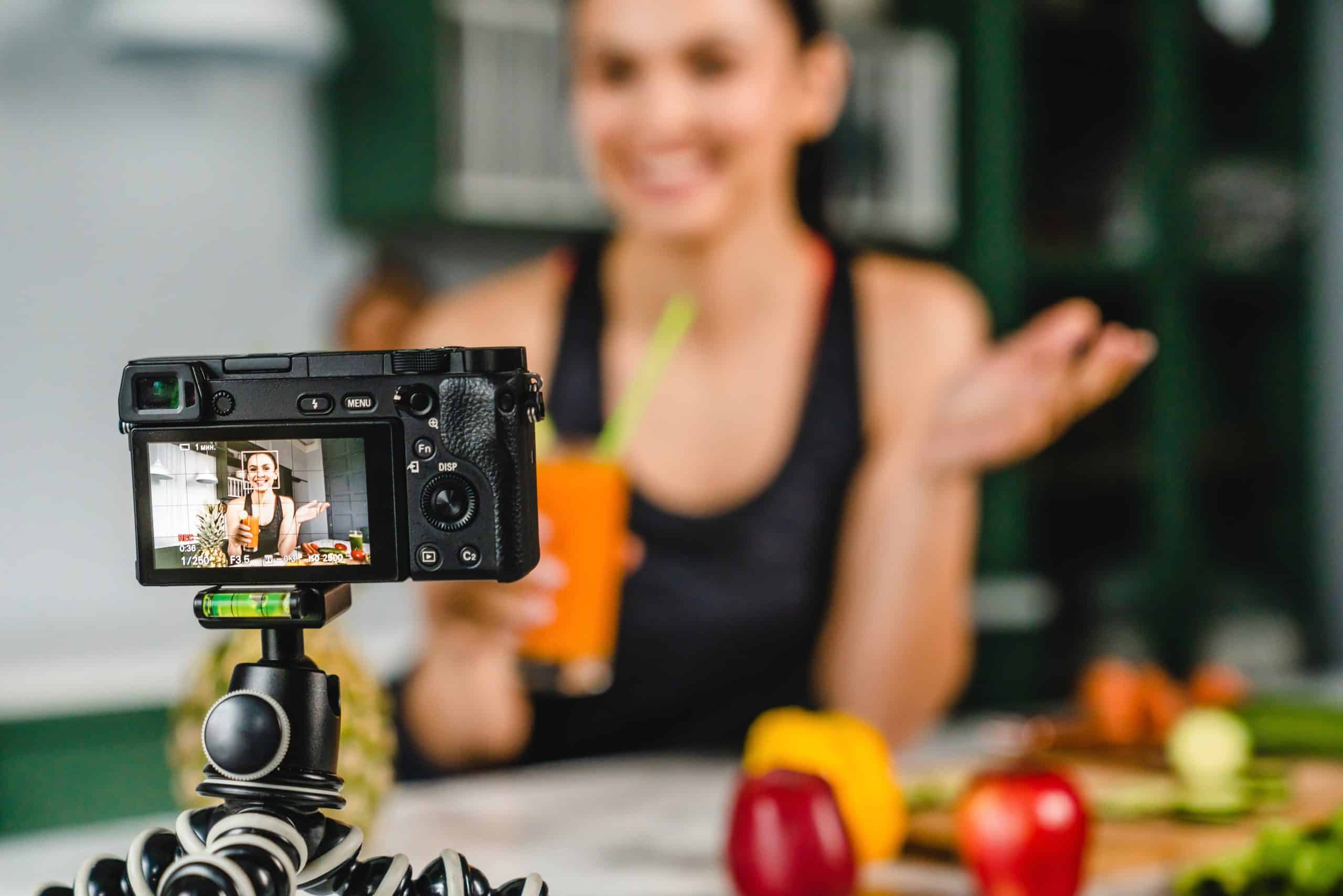- Trend 1: The Maturation of Influencer Marketing and the Focus on ROI
- Trend 2: The Continued Rise of Micro and Nano Influencers for Targeted Engagement
- Trend 3: The Importance of Authenticity and Transparency in Influencer Partnerships
- Trend 4: The Evolution of Platforms and Formats for Influencer Content
- Trend 5: The Integration of Influencer Marketing with Broader Strategies
- Key Takeaways
- Frequently Asked Questions (FAQs)
Over the past decade, influencer marketing has evolved from an unknown, experimental novelty to a core element of the digital strategy for many businesses, both large and small. As consumer trust in traditional advertising continues to decline, influencer marketing is a powerful alternative that can create a more personal way to reach target audiences on social media.
These days, though, it’s so much more than follower counts or the number of likes on a sponsored post. Brands must see results, and the influencer marketing ecosystem is responding to these new demands with measurable return on investment and scalable partnerships.
Trend 1: The Maturation of Influencer Marketing and the Focus on ROI
Influencer marketing is no longer an experimental piece of a larger marketing puzzle: These days, brands treat it as a significant performance and revenue driver, with return on investment (ROI) expectations similar to paid search or display advertising. This has meant an increase in tighter attribution, clearer performance metrics, and advanced measurement tools being used to demonstrate campaign effectiveness.
Rather than simply working with the most popular influencers, brands are now more focused on what an influencer can provide in terms of outcomes: Clicks, conversions, and long-term customer value are more important than a product or service being seen by many followers, but with little follow through.
Tools like Shopify Collabs and LTK Connect have made it even easier for influencers to share affiliate links, promotional codes, and UTM-tagged URLs that all contribute to performance data. Integrating these tools with Shopify and Google Analytics enables brands to more effectively track every aspect of an influencer campaign.
Another important maturation of influencer marketing in recent years has been the legal frameworks surrounding these. Contracts now frequently include performance-based clauses, ownership rights for content, and exclusivity terms. Influencers must also comply with FTC regulations when it comes to declaring gifted or advertised products. This ensures that both the influencer and brand have clear expectations of what’s required in the campaign.
Stats you should know about influencer marketing in 2025:
- The global influencer marketing market is expected to reach approximately $33 billion by the end of 2025.
- 67% of brands use influencers to drive conversions, not just awareness.
- 63% of businesses now include ROI-specific targets in influencer contracts.
Trend 2: The Continued Rise of Micro and Nano Influencers for Targeted Engagement
Bigger doesn’t always mean better, particularly for small to medium businesses with modest budgets and specific target audiences. Micro influencers (those with under 100,000 followers) and nano influencers (those with under 10,000 followers) are continuing to outperform even the most famous influencers when it comes to tangible performance metrics. This is especially the case in the beauty, fashion, food, and wellness industries.
These smaller creators often have hyper-engaged communities that brands can benefit from. Their followers trust their recommendations, and due to their smaller audience, influencers are able to engage one-on-one with many of their audience to create an authentic, two-way relationship.
With such a personal connection to their followers, brand advertising still feels personal, rather than promotional. As they operate on a smaller scale, for brands on a tight budget, working with micro and nano influencers can often be more cost-effective. This means that you can work with multiple creators for the cost of a single, larger influencer.
Tools like Upfluence and GRIN can help streamline your influencer management, from outreach to content approvals and reporting. This is especially useful for micro and nano influencers who likely aren’t working with their own management companies. Working directly with influencers also means that you can start to build mutually-beneficial relationships with them, encouraging long-term professional connection.
Micro-influencer stats for 2025:
- 45% of marketers find that small influencers have more trust with their followers than macro influencers.
- Micro influencers generate up to 60% more engagement than macro influencers.
Trend 3: The Importance of Authenticity and Transparency in Influencer Partnerships
With the increasing use of AI, consumers have become both savvy and skeptical when it comes to online content. Fake recommendations are easy to spot, while others are quick to call out influencers or brands that don’t disclose their partnerships correctly.
Regulators are also taking note. The FTC updated its guidelines in 2023 to require influencers to clearly communicate when posts are sponsored or feature gifted content. Brands are also being held accountable for these partnerships, with both the influencer and brand facing fines for non-compliance.
Authenticity in influencer content goes so much deeper than FTC compliance, though: It’s about relevant storytelling and real-world relatability. User-generated content (UGC) has seen a significant rise in recent years and influencers are now creating content in this same style, even for paid promotions. Behind-the-scenes glimpses and honest reviews now resonate more than a polished ad — it’s no longer about looking perfect. Instead, consumers want honesty and transparency.
Digital advertisers play an important role here, too. Vetting influencer history, looking at their previous campaign metrics and engagement quality through PR auditing tools, can all help brands find out if an influencer is who they say they are. This is an essential step for ensuring brand integrity before a campaign goes live.
Transparency in influencer marketing stats that you need to know:
- One in three consumers say too many sponsored social media posts cause them to lose trust in influencers.
- 77% of consumers trust content from people similar to themselves.
- FTC fines for deceptive practices can be up to $50,120 per violation.
Trend 4: The Evolution of Platforms and Formats for Influencer Content
As the world of influencer marketing has continued to expand, so too have platforms to support this type of content. BeReal, Lemon8, and Threads are all creating new social space for influencer content, particularly for Gen Z audiences and younger.
Short-form videos are continuing to dominate in influencer marketing, especially those under one minute, but other formats, including long-form content on YouTube, are also seeing increased engagement. Livestream shopping, voice-based content, and interactive polls in Instagram Stories are also seeing high levels of engagement.
Virtual influencers and AI-generated creators are also starting to enter mainstream influencer marketing campaigns. There remains controversy around these, with brands looking for consistent messaging 24 hours a day choosing to make use of this new technology. But freelance marketing consultant Rachel Vandernick points out the pitfalls of this, saying that, “The thing about AI influencers that makes them interesting is also what makes them contradictory. People want the unique point of view or voice that an influencer has: They can offer insights into lived personal experiences that AI influencers simply can’t do because they’ve never lived or experienced anything.”
Podcasts and newsletters are also growing influencer partnership channels thanks to the rapid growth of platforms like Beehiiv and Substack. Influencers are able to build their community without algorithmic interference, an approach that brands can capitalize on with strategic sponsorships and partnerships.
Stats around the evolution of influencer marketing in 2025:
- 33% of Gen Z prefer BeReal and Lemon8 for authentic content.
- 45% of influencer marketers now work with podcast hosts as brand ambassadors.
- The global influencer market is expected to reach $84.89 billion by 2028.
Trend 5: The Integration of Influencer Marketing with Broader Strategies
In 2025, marketers are required to no longer think about different strategies in a silo. Instead, all marketing channels must be fully integrated across the sales and marketing funnel. Whether your brand is already working with SEO, paid digital advertising, and social, and now incorporating influencer marketing, every stage of the customer journey must be tracked and accounted for.
Influencers drive so much more than awareness of a brand and for small to medium businesses, repurposing influencer content can be an effective way to generate additional revenue. Facebook ads, email flows, or even Amazon listings can all incorporate influencer content that reduces creative overheads and improves performance thanks to its relatable nature.
This type of content can also be repurposed into other formats, like blog posts, podcasts, or even a case study. For teams with small bandwidth and a limited budget, this type of work can be strategically effective for boosting your marketing outcomes.
Influencer marketing stats you need to know in 2025:
- 71% of marketers use influencer content in paid ads to boost performance.
- Brands see an average 20% increase in click-through rate when using UGC in email campaigns.
- 52% of marketers repurpose influencer content across three or more channels.
Key Takeaways
For direct-to-consumer brands, influencer marketing can be a powerful tool for growth beyond traditional digital marketing channels. By focusing on ROI and nurturing relationships with micro and nano influencers, brands can create authentic marketing campaigns that remain transparent and enticing to a growing audience.
Frequently Asked Questions (FAQs)
What are the most effective platforms for influencer marketing in 2025?
TikTok, YouTube, and Instagram are some of the most popular and effective platforms for influencer marketing in 2025, but new platforms like BeReal and Lemon8 are also popular among younger users.
How much should brands budget for influencer marketing?
Small to medium businesses typically spend around 10-25% of their marketing budget on influencer campaigns, with many influencers in the micro and nano markets charging $500-$1,000 per campaign.
What are some common mistakes to avoid in influencer marketing?
Lack of clear goals, poor influencer vetting, ignoring FTC compliance, and failing to repurpose content are some of the biggest mistakes brands can make when it comes to influencer marketing.
How can brands protect themselves from influencer fraud?
Tools like HypeAuditor are some of the best ways to detect fake followers on an influencer’s profile, while also managing multiple influencer relationships and campaigns at one time.
What are the key trends in influencer marketing measurement and analytics?
ROAS tracking, affiliate link attribution, sentiment analysis, and cross-channel performance are all some of the best ways to determine how successful an influencer marketing campaign is.



